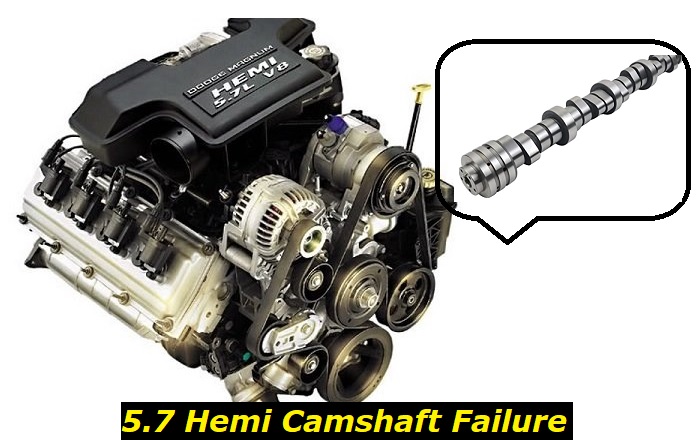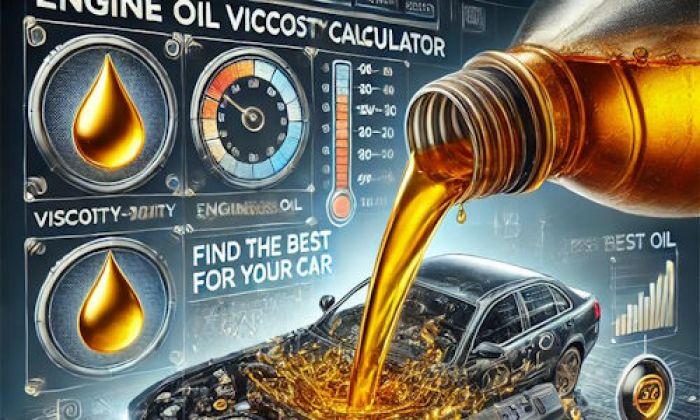When Chrysler released the 5.7 Hemi V8 engine to the Chrysler 300C in 2005, the camshaft was to be the holy grail. Designed to optimize valve timing, and increase power and torque, while boosting fuel economy, nothing could go wrong with the 5.7 Hemi Camshaft. Right? Wrong!
Key features and my opinion about the engine
- Production years:2009-now
- Average lifespan of 5.7 Hemi:220,000-250,000 miles
- Fuel supply type:port injection
- Power range:355-395 hp
- Fuel efficiency:bad
- Engine block material:cast iron
- Engine reliability score:high
- The most common problems:you will need thin oil, otherwise lifters will die, EGR problems, exhaust manifold problems, Hemi ticking noise issues.

The 5 Common 5.7L Hemi Camshaft Problems
Problem 1: Lobe Wear
The camshaft lobes are responsible for the opening and closure of valves. To perform this function, they must be properly lubricated. The primary cause of lobe wear is a lack of lubrication either by too much clearance space or blockage of oil passages. The increased friction during rotation will reduce trigger a loss of power and performance, and increase fuel consumption.
The Four Major Symptoms of Possible Lobe Wear:
- Loss of power
- Reduced performance
- Increased fuel consumption
- Strange tapping or clicking noises from the engine
Causes of Lobe Wear:
- Improperly functioning lifter:A damaged lifter can affect your lobe. If your lifter is out of position and you notice gouging on the lobes, it may be your source of lobe wear. Such a gouge is caused by the striking of the lifter on the lobe.
- Lack of lubrication:As discussed earlier, excess clearance space or passage blockage will prevent the lobes from being lubricated. It can also be caused by failing to use the proper oil or not changing it. As such, the camshaft lobe becomes susceptible to heat. Therefore, should the vehicle undergo any strenuous activity, such as towing a heavy load, overspeeding, or driving stop-and-go traffic, the lobe will wear.
- Dirt and Debris:When installing parts like a camshaft, it is important to clear all passageways and clean them off dirt and debris. They are a major cause of pitting on the edges of the camshaft lobe.
Solution
Lobe wear is a serious problem and must be fixed. 0.001-inch wear on your lobe can adversely affect your valve timing by up to 3 degrees. To fix this problem, you first have to identify the source of the camshaft lobe wear.
If it's from a damaged lifter, then you will have to replace the lifter and lobe. If not, you simply have to replace the worn camshaft lobes with new ones. The replacement process is best done by a qualified mechanic.
Problem 2: Damaged Lifter
It is easy for your camshaft lifter roller on your 5.7 Hemi engine to get damaged. Beyond the general wear and tear, and as we will discuss further below, the 5.7 Hemi engine has a possible design flaw that may be responsible for damaged camshafts and lifters. The cause: lubrication.
The oil that gets to the lifter is pressure lubed and not splashed as is the case with most camshafts. Therefore, extensive idling and low rpm will not generate enough pressure to adequately lubricate the lifter. This does not eliminate human activities such as failure to change the oil regularly or not using the right type of oil.
Signs of a damaged lifter
- Loss of power and performance from your vehicle.
- Strange noises coming from the engine, such as tapping or ticking.
Probable causes
Lifter damage has tons of possible causes and they are as follows:
- Damaged roller:The lifter roller may be damaged probably due to a faulty bearing or insufficient lubrication. However, the biggest cause of roller failure is contamination. Causes of contamination include material shed and wrong breaking oil.
- Mechanical parts:Mixing parts can cause cam/lifter failure. Always check that all your parts are up to spec and are not making any unnecessary contact.
- Lubrication:Poor lubrication, failing to change the oil often, or using the wrong oil time are also causes of camshaft lifter failure.
Solution
The sole solution to lifter failure is a replacement.
Problem 3: Worn Bearings and Journals
The camshaft bearings are what support the camshaft and keep it in place. The camshaft journals are what the bearings ride on. Over time, these bearings and journals can start to wear down and cause problems. Also, if you find yourself replacing your camshaft, you may want to change the bearings. The old ones will be no match for the new camshaft and may not also be the same size as the aftermarket replacement.
Symptoms:
- Loss of power and performance from your vehicle.
- Strange noises coming from the engine, such as tapping or clicking.
Possible causes
- Lubrication:Camshaft bearing and journal failure are usually caused by poor lubrication, using the wrong type of oil, or not changing the oil often enough.
- Dirt and debris:Another cause of the wearing of bearings and journals is the buildup of dirt and debris around those areas. These increase friction and eventually damage them. Regularly changing the oil and filter will ensure that your camshaft is kept clean at all times.
- Wear and tear:The most common cause of wearing of these parts is normal wear and tear. Depending on the nature of use and your vehicle maintenance culture, the bearings and journals are likely to require a replacement over time.
Solution
Although many forums claim that camshaft bearings are serviceable, the best solution is to replace them.
Problem 4: Camshaft Position Sensor Failure
The Camshaft Position Sensor is used by the engine computer to determine when the spark plugs should fire. Over time, this sensor can start to fail and cause problems. A clear sign that your camshaft sensor is failing is when it starts delaying sending signals. Poor fuel delivery and ignition timing, regardless of how small, will cause poor acceleration, the vehicle may sputter, have limited power, sputter, or even shut down completely.
Symptoms
- Engine misfires
- Rough idle
- Vehicle shut off
- Poor fuel mileage
- Check Engine Light is on
Possible causes
- Dirty oil in the engine:One of the major reasons why a camshaft position sensor might go bad is the presence of grime and oil in your 5.7 Hemi engine. That is why it is important to change your oil filter and replace oil regularly.
- Water damage:unfortunately, a common cause of position sensor damage in your camshaft is flooding and water damage. This results in hard starting or engine misfiring.
- Human error:During the process of replacing intake and injectors, the camshaft position sensor may have been improperly removed. This issue can cause the sensor to not insert properly or may even damage it. Bad wiring is another human factor that may damage your position sensor.
- Vehicle overheats:The final cause of camshaft position sensor failure is vehicle overheating. The surge in the temperature of your 5.7 Hemi engine can damage this sensor.
Solution
The solution to a faulty camshaft sensor depends on the cause of the problem. It is important to first check that it is inserted properly. If it is and still not working, then you need to find a replacement.
Problem 5: ??Cracked or broken Camshaft
If the actual hard iron pipe responsible for combustion airflow in your 5.7 Hemi is cracked or broken then it can spell trouble for your 5.7 Hemi engine. In such circumstances, it will require fixing immediately.
Failure to fix a cracked or broken camshaft can lead to engine failure, or at the very least cause a lot of damage. This is because the debris from the broken camshaft can also affect other valvetrain components of your 5.7 Hemi engine, such as your crankshaft, pistons, and cylinder head.
Symptoms
- Engine will not start
- Check Engine Light is on
- Metal debris in engine oil
- Increased emissions
- Engine misfire
- Engine makes strange noises
Possible Causes
- Handling:One of the most common causes of a cracked or broken camshaft is handling. Often during shipping or installation, improper handling can cause the camshaft to crack or break
- Mechanical failure:This occurs when a rotating part such as a connecting rod falls out of position and strikes the camshaft cracking or breaking it as a result.
- Metal fatigue:A rarer occurrence is metal fatigue. This is the end result of wear and tear and should only occur after years of use.
Solution
The sole solution to a broken camshaft is to replace it.
Could a Chrysler Design Flaw Be Responsible for a 5.7 Hemi Camshaft Failure?
The gen 3 5.7l Hemi engine has been criticized for being partly responsible for the spike in camshaft challenges. The truth is if we look at the design of the Chrysler engine, it is hard not to agree with them.
Most damaged 5.7 Hemi lifters have scrapes and scars on their body while others have marks around the edges. We discovered that those with scars and scrapes are from the lifter bank. On the other hand, those with marks are from the upswing. The sole cause of this damage is poor lubrication. If the lifter bore had an even film of oil this will not occur.
Comparing the 5.7 Hemi with other cool engines
When we compare the 5.7 Hemi with other 'normal' engines, we discover that a camshaft rides within a small distance of 0.5 inches of the reciprocating assembly. As a result, the camshaft receives splashed oil from the pit, particularly when the engine is operating at 2000rpm. No restriction prevents the oil from getting shrugged off from the camshaft.
Now, let's look at the 5.7 Hemi engine. Chrysler moved the camshaft ALL the way up. There was a rationale for this-it gave the lifters a clear shot at the pushrods and rocker arms. But, the problem was that it kept the camshaft away from the lower-down reciprocating assembly that is throwing oil.
To make matters worse, at the bottom of the camshaft bores is a tube blocking the camshaft from being saturated in oil. So the only time the camshaft is lubricating is when the RPM is high and the engine is throwing enough oil.
Therefore, if your 5.7l Hemi engine is running idle or at a low rpm, your camshaft is theoretically going to receive limited lubrication. The lack of oil will in the long run damage many parts in the Hemi camshaft or even the camshaft itself.
This analysis does not vitiate any of the other causes of the camshaft failure we have listed above. However, it opens up the possibility that Chrysler may be partly to blame. After all, camshaft problems were partly responsible for the 2011 Dodge Ram pickup recall.
How to Avoid or Prevent Camshaft Failure
Preventing camshaft failure is crucial for the 5.7 Hemi. Here are certain things you can do to prevent your camshaft from failing.
- Lubricate your lobes during installation:Improperly lubricating the lobes during the installation of a camshaft is a reason why it may fail. Ensure you use the right lubricant and apply it generously.
- Use the right lubricant:Using the manufacturer-recommended lubricant for your 5.7 Hemi is the best way to prevent it from failing.
- Change old lifters when mounting new camshaft:You can use new lifters with a used camshaft that is still good. However, you cannot use a used lifter on a new camshaft regardless of how good that lifter may be.
- Know your valve spring pressure:Never install valve springs without knowing the required pressure. Failure to do so may cause your camshaft to fail.
Cost of Repairing or Replacing a Bad or Failing Camshaft in a 5.7 Hemi Engine
The cost of repairing or replacing a camshaft in a 5.7 Hemi engine will vary depending on a few different factors. The most important factor is the severity of the problem. If the problem is severe, it may require a complete replacement. However, if the problem is not as severe, it may only require a few simple repairs, either of faulty parts or by having the camshaft machined.
The cost of the parts will also vary depending on the make and model of the vehicle. However, in most cases, the estimate of the parts will be between $200 and $300. The labor costs will also vary depending on the make and model of the vehicle. However, in most cases, the labor costs will be between $100 and $200. Therefore, the total cost of replacing the camshaft should be between $300 and $500.
Conclusion
Camshaft failure can happen to any vehicle and not just the Hemi 5.7 engine. The bulk of the various causes of camshaft failure listed here is the result of dirt and debris, normal wear and tear, mechanical failures, or human error. However, there are possibilities as we have discussed herein that the engine's design may be a contributory factor to the camshaft failure.
That said, we have looked at the five major causes of the 5.7 Hemi camshaft problems. Also, reviewed are their signs/symptoms, causes, and solutions. We then touched on the ways you can prevent your camshaft from failing. Finally, we analyzed the cost of repairing or replacing a damaged camshaft. Camshaft maintenance, repairs, or replacements are quite technical and unless you have vast knowledge about it, always use a professional.
About the authors
The CarAraC research team is composed of seasoned auto mechanics and automotive industry professionals, including individuals with advanced degrees and certifications in their field. Our team members boast prestigious credentials, reflecting their extensive knowledge and skills. These qualifications include: IMI: Institute of the Motor Industry, ASE-Certified Master Automobile Technicians; Coventry University, Graduate of MA in Automotive Journalism; Politecnico di Torino, Italy, MS Automotive Engineering; Ss. Cyril and Methodius University in Skopje, Mechanical University in Skopje; TOC Automotive College; DHA Suffa University, Department of Mechanical Engineering






Add comment